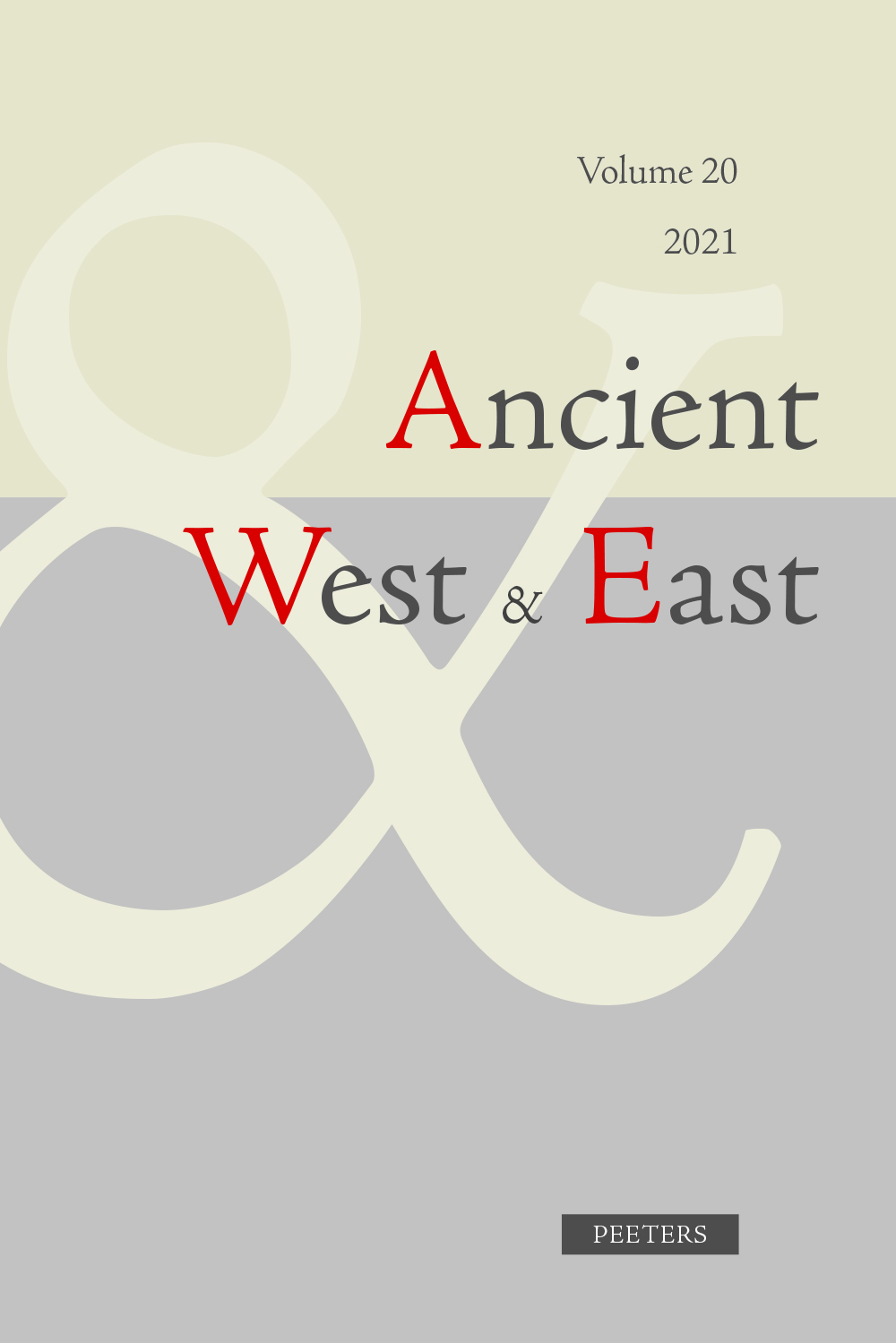 previous article in this issue previous article in this issue | next article in this issue  |

Preview first page |
Document Details : Title: Iranische Feuertempel Subtitle: Genese, Entwicklung und Funktion Author(s): PLONTKE-LÜNING, Annegret Journal: Ancient West & East Volume: 8 Date: 2009 Pages: 203-221 DOI: 10.2143/AWE.8.0.2045843 Abstract : For more than a century the roots, origins and precise functions of so-called Iranian fire temples of the pre-Sasanian period have been a matter of controversy. The aim of the paper is to describe the structure and functions of the buildings which are considered to be the oldest fire temples. They are characterised by a construction with four pillars in the centre of a room surrounded by other rooms. It seems probable that the type originates in Achaemenid palace architecture with its four-pillared rooms, and that its origins are connected with new forms of religious life developed after the Macedonian conquest of Iran. Before then there was no demand for a specific type of temple building for the Iranian cult of fire: it was executed on open terraces. The first buildings of the four-pillar type, which survive particularly in peripheral regions of ancient Iran, such as Bactria or Caucasian Iberia, were not exclusively fire temples – other goddesses were worshipped there too. The best example is the Oxus temple in southern Tajikistan where, beneath the cult of fire, the river god Oxus was worshipped. Even in the temples of Iberia we can recognise the veneration of personified gods beneath the fire cult. The exclusive and very rigid fire cult seems to have been the result of the strong religious policy of the early Sasanids, especially of the great priest Kirdir. |
|


